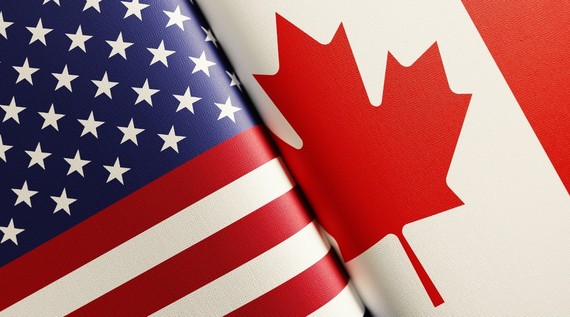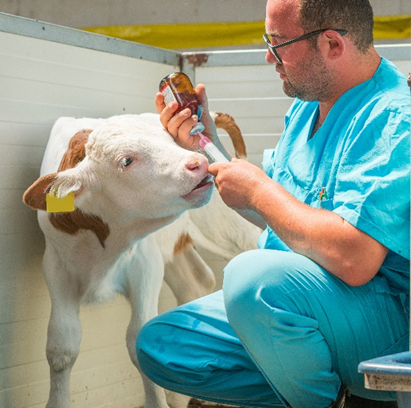| Ten years ago, then-President Barack Obama and Canada's then-Prime Minister Stephen Harper directed the creation of a United States-Canada Regulatory Cooperation Council (RCC), composed of senior regulatory, trade, and foreign affairs officials from both governments. The intent, they said, was to work toward smarter, more effective approaches to regulation that enhance the economic competitiveness and well-being of the United States and Canada, while maintaining high standards for public health, safety, and environmental protection. From its beginnings, the goal was to work toward closer regulatory harmonization, provide a forum for stakeholders to discuss regulatory barriers, and work with regulators to identify opportunities for cooperation between the two governments.  The 2011 Action Plan listed 29 U.S. government-wide initiatives that covered a range of regulatory work, with many that touched on FDA equities, including food safety, pharmaceuticals, and medical devices. The Plan was updated in 2014 when regulators established department-to-department commitments, and its principles were reaffirmed in a Memorandum of Understanding (MOU) with Canada in 2018. Mick Mulvaney, then-director of the U.S. Office of Management and Budget (OMB), noted at the MOU-signing ceremony that, "We have uniquely connected economies that together generate billions of dollars a day. An open dialogue on regulatory policy is necessary for our continued economic success." The FDA's Role Even before the RCC was established, the FDA, Health Canada, and the Canadian Food Inspection Agency (CFIA) already had an excellent working relationship, including a pre-standing confidentiality arrangement for information sharing along with other MOUs on various topics. The RCC provided an avenue for further collaboration on regulatory alignment and stakeholder engagement in the areas of food safety, pharmaceuticals, biologics, veterinary drugs, and medical devices. The agencies embraced the RCC concept that "regulators must lead the way to create and sustain change; they are the ones doing the work." The FDA's Office of Global Policy and Strategy's (OGPS) Global Engagements Team (GET) has been tasked with coordinating the FDA's RCC work since the Council's beginnings. GET has negotiated bilateral commitments and work plans with CFIA and Health Canada on behalf of the FDA product centers and coordinated multiple efforts with the OMB's Office of Information and Regulatory Affairs, the lead agency for the U.S. government efforts under the RCC. RCC Success Stories Over the years, the FDA can point to several RCC-fostered successes in our work with Health Canada and CFIA. By 2014, the joint use of the Common Electronic Submission Gateway (e-Gateway) had been successfully implemented, allowing for simultaneous online submission of new drug applications to both the FDA and Health Canada. This was especially significant for Canada, which previously did not have a way to accept submissions securely over the internet — representing a great time and cost savings for industry and a benefit for regulators. In 2016, the FDA signed a Food Safety Systems Recognition Arrangement with CFIA and Health Canada, which recognized each other's food safety systems as comparable to each other. This means the agencies collaborate more closely and effectively on making risk-informed decisions when food safety concerns arise. This level of regulatory cooperation allows both countries to avoid duplication of effort while leveraging their high-quality regulatory work. The agencies continue to work together to ensure that our systems deliver comparable public health outcomes. But the best measure of the RCC's value may be illustrated in what has been accomplished in regulatory work involving veterinary medicine. In 2012, only a year after the RCC's inception, the FDA and Health Canada had met the goal of implementing simultaneous veterinary drug reviews — an important first step toward achieving simultaneous access to veterinary drugs in both the U.S. and Canada. Since then, the FDA's Center for Veterinary Medicine (CVM) and the Health Canada Veterinary Drugs Directorate (VDD) have approved 14 simultaneously-reviewed new animal drug applications (nine for companion animals, five for food animals). Together they have also improved internal mechanisms for more timely processing of reviews, and for engaging industry so that these mechanisms work for them. | |  | A foundational principle of the RCC is to establish a dialogue with stakeholders. Stakeholders from both veterinary medicine and the meat industry asked the U.S. and Canada to align their required tolerances, maximum residue limits (MRLs), dosages, and withdrawal times for those veterinary drugs used to treat food animals. In response, CVM and VDD compared human food safety evaluation approaches and aligned veterinary drug residue tolerances and MRLs, whenever possible, on simultaneously reviewed new animal drug applications. Additionally, CVM and VDD noticed that differences, where they existed, were small and not likely to result in trade issues for meat. The U.S.-Canada RCC relationship provided a platform for the two governments to review and respond to stakeholder concerns. Collaboration on veterinary topics under the RCC has continued to grow. For example, in the 2019 Work Plan, CVM and VDD committed to work toward the simultaneous review of generic animal drug applications. And just as the FDA and Health Canada do now for human drugs, CVM and VDD are working toward enabling online single-portal simultaneous submission of veterinary drug applications. Implementation of this improvement will allow animal drug sponsors to truly submit the same information to both regulators simultaneously. Looking Forward OGPS' Global Engagements Team and the FDA centers will continue to collaborate closely with our Canadian counterparts to ensure that our commitments outlined in the work plans remain current and relevant. In alignment with broader international harmonization goals, the FDA and Health Canada are collaborating to develop foundational building blocks for a Medical Device Single Review Program. This program will offer medical device manufacturers the opportunity to receive a single premarket review (for eligible devices) that satisfies the relevant requirements of multiple countries, including the U.S. and Canada. Work is underway on the program that will help improve patient access to medical devices, support innovation by decreasing barriers to entry, and strengthen standards development through international consensus. Our commitment to global public health through collaboration and the sharing of knowledge and resources across our two countries' regulatory jurisdictions will aid in strengthening confidence and consistency in the regulatory decision-making process. Sema Hashemi, M.S., is the supervisory lead for the Global Engagements Team in the Office of Global Diplomacy and Partnerships in the FDA's Office of Global Policy and Strategy Anna Ferus, M.A., is an international policy analyst for the Global Engagements Team in the Office of Global Diplomacy and Partnerships in the FDA's Office of Global Policy and Strategy Brandi Robinson, M.P.H., C.P.H., is an international program manager in the Office of New Animal Drug Evaluation in the FDA's Center for Veterinary Medicine |
No comments:
Post a Comment